Communication systems form the backbone of modern technology, enabling the transfer of information across various platforms. At the heart of these systems lies modulation, a technique used to encode information onto carrier waves. Modulation is crucial for efficient signal transmission over long distances and across different mediums. There are two primary types of modulation: analog and digital. Amplitude Modulation (AM) and Frequency Modulation (FM) are fundamental analog techniques, commonly used in radio and television broadcasting. Digital modulation methods, including Amplitude Shift Keying (ASK), Frequency Shift Keying (FSK), and Phase Shift Keying (PSK), play a pivotal role in modern communication systems such as wireless networks, optical fiber transmission, and telemetry.
LabVIEW a powerful graphical programming tool, offers an interactive environment for simulating both analog and digital communication systems. It provides real-time visualization and control of system parameters, making it an ideal platform for understanding modulation and demodulation processes. By simulating these techniques, engineers and students can gain a deeper understanding of how different modulation schemes work and their applications in real-world communication systems. This article delves into the key modulation techniques and demonstrates their simulation using LabVIEW, providing valuable insights into both theory and practical implementation.
Modulation Techniques:
Modulation techniques are essential for transmitting information over communication systems. Amplitude Modulation (AM) involves varying the amplitude of a carrier wave in proportion to the message signal and is widely used in radio broadcasting. Frequency Modulation (FM) alters the frequency of the carrier wave according to the message signal, offering better noise resistance and clear reception, making it ideal for radio and wireless communication. Phase Modulation (PM) modifies the phase of the carrier wave relative to the message signal, used in applications like satellite communication and digital data transmission for efficient bandwidth use and noise resilience.

1. Amplitude Modulation (AM) is a modulation technique used in analog communication systems to transmit information by varying the amplitude of a carrier wave in proportion to the waveform being sent. In AM, the amplitude of the carrier signal is varied according to the amplitude of the modulating signal (also known as the message signal). The modulation process involves multiplying the carrier signal by the modulating signal to produce the modulated waveform. The modulated signal consists of the carrier wave with sidebands around it, carrying the information from the modulating signal. AM is widely used in broadcast radio transmissions and some shortwave communications.
Expression of AM

Where, s(t) Amplitude Modulated Signal, m(t) Message Signal, c(t) Carrier Signal
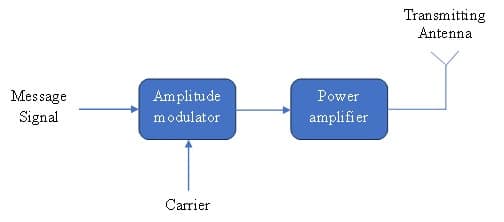
2. Frequency Modulation (FM) is a modulation technique used in communication systems where the frequency of the carrier signal is varied in proportion to the amplitude of the modulating signal. As the amplitude of the modulating signal changes, the frequency of the carrier signal shifts accordingly. FM is commonly employed in radio broadcasting and wireless communication due to its resistance to noise and interference, which results in clearer reception compared to other modulation techniques like Amplitude Modulation (AM) as in Fig.1. FM allows for efficient transmission of audio signals with high fidelity and is also used in various data communication applications.
Expression of AM

Where, s(t)= Output Signal, c=Carrier Frequency, β=Modulation Index
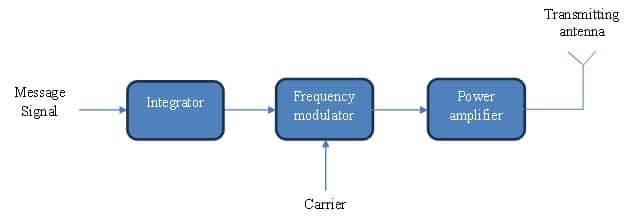
3. Phase Modulation (PM) is a modulation technique used in communication systems where the phase of the carrier signal is varied in proportion to the amplitude of the modulating signal. Unlike Frequency Modulation (FM), which varies the frequency of the carrier signal, PM directly modifies the phase. PM is closely related to FM, and both techniques are often used interchangeably in practical applications. PM is used in various communication systems, including telecommunications, satellite communication, and digital data transmission. It offers advantages such as efficient use of bandwidth and robustness against noise and interference.
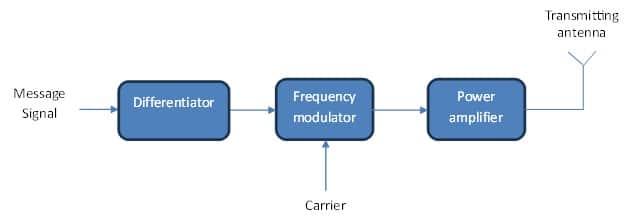
Expression of PM

Where, mp=Phase Senstivity Factor
Software Design
LabVIEW (Laboratory Virtual Instrument Engineering Workbench) is a graphical programming environment developed by National Instruments. It is widely used for designing and implementing complex measurement, test, and control systems. LabVIEW’s intuitive visual programming language allows users to create programs by wiring together functional blocks, making it accessible for users without extensive coding experience. The platform is particularly valuable for simulating and analyzing communication systems, automating data acquisition, and controlling hardware. Its powerful tools and real-time visualization capabilities facilitate the development of sophisticated systems and provide an interactive interface for users to dynamically adjust parameters and view results.
Amplitude Modulation
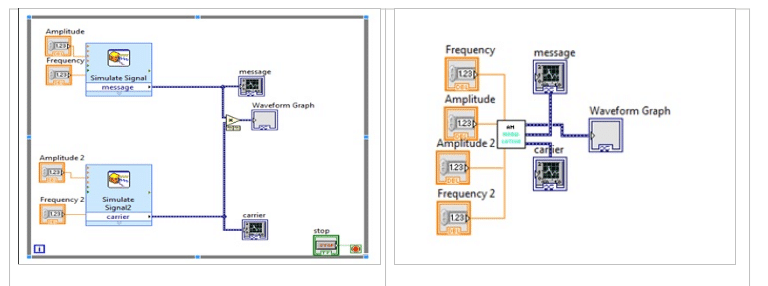
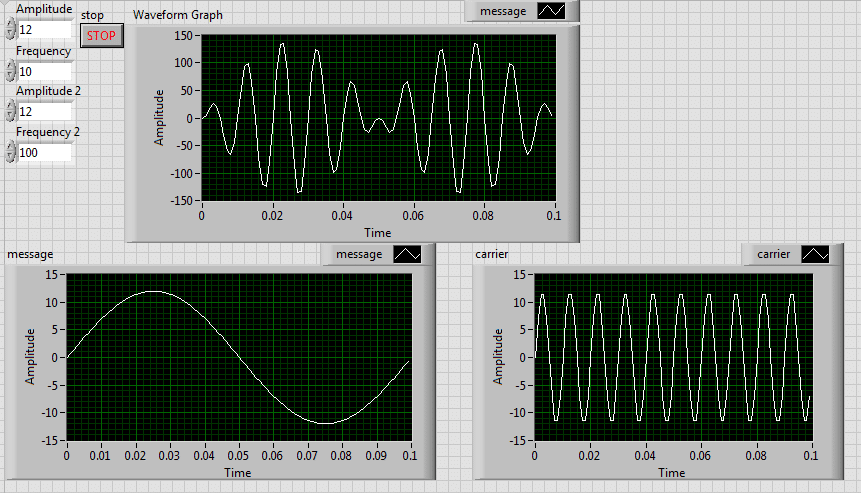
FREQUENCY MODULATION
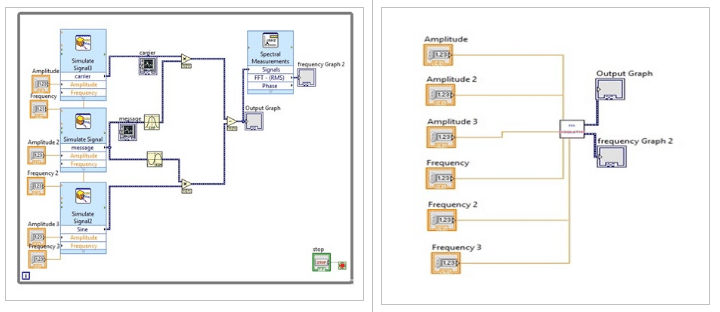
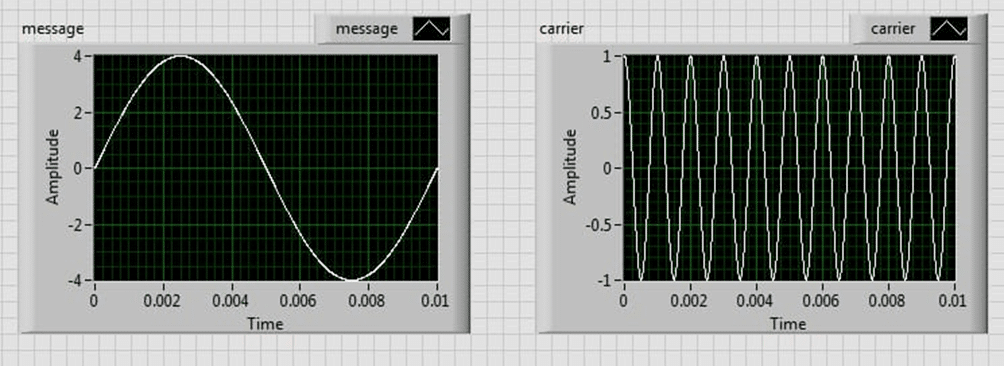
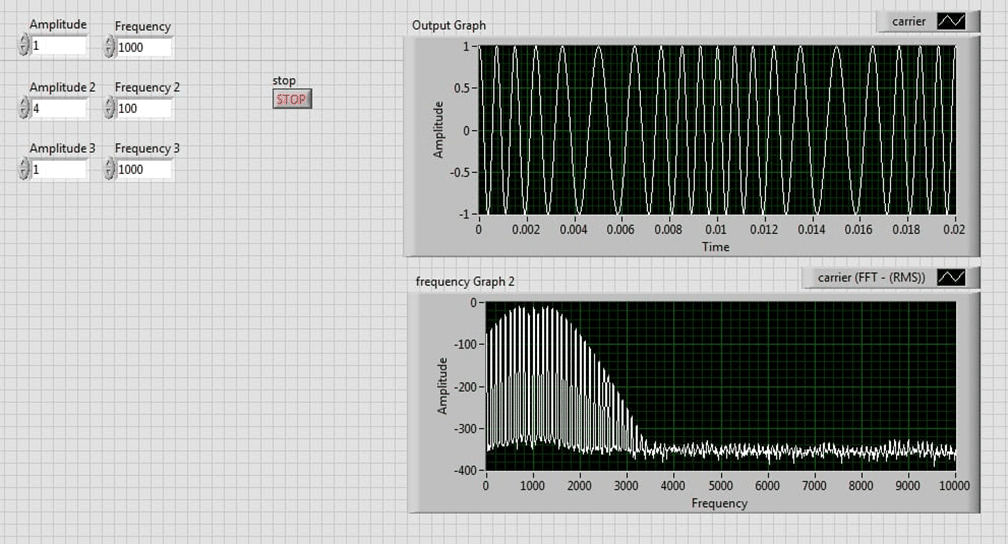
PHASE MODULATION
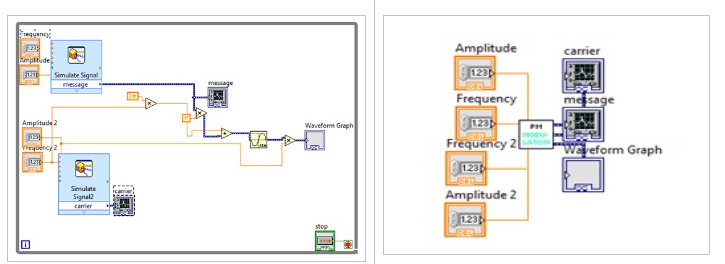
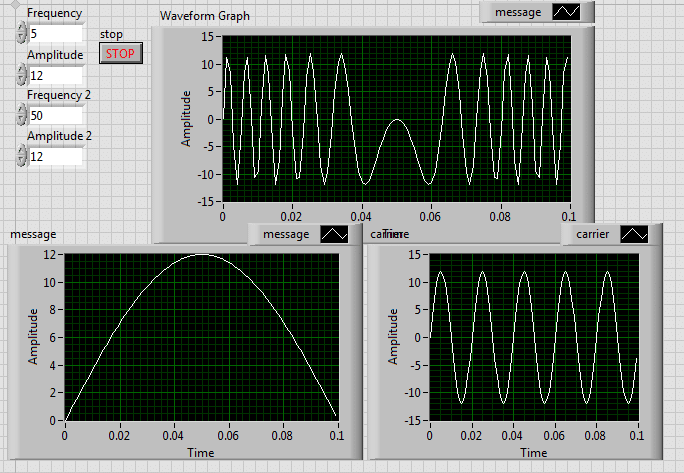
Conclusion:
LabVIEW offers a practical platform for implementing and simulating Amplitude Modulation (AM), Frequency Modulation (FM), and Phase Modulation (PM). Students can visualize and interact with modulation processes using LabVIEW’s graphical programming environment, which simplifies the complex mathematics behind these techniques. By creating simulations, students can experiment with different parameters and observe their effects on the modulated signals in real-time. This hands-on approach enhances understanding of how modulation works and its applications. LabVIEW’s interactive features make it easier for engineering students to grasp these fundamental concepts, reinforcing theoretical knowledge through practical, visual experimentation.









